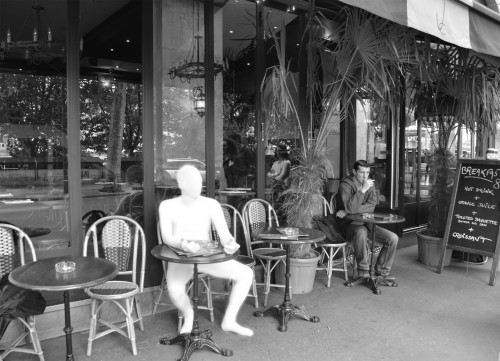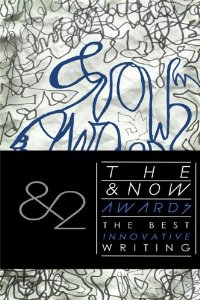A Review of Davis Schneiderman’s [SIC]
 [SIC]
[SIC]
by Davis Schneiderman
Jaded Ibis Press, October 2013
154 pages / $16 Buy from Jaded Ibis Press or Amazon
As an undergraduate, Professor Barrick (my physics instructor) taught me that white light is all of the colors combined; in painting, white is the absence of pigment – it is the anti-color. I lead off with this seemingly paradoxical tidbit about the shade? color? absence? white because white plays an important role in Davis Schneiderman’s new novel? conceptual art collection? book? book [SIC] (Jaded Ibis Press 2013), as it did in the first installation of his Dead/Books trilogy, BLANK (Jaded Ibis Press 2011).
In BLANK, white is the empty space on the pages that follows chapter titles representing common occurrences in common novels. “They meet” and “They fall in love” and “They fall apart” and “A character dies” are all there tantalizingly introducing nothing at all. The idea, of course, is to get us to think about the fact that no matter how clever the writing may be, the same damn things happen again and again. And just in case we believe it might all stop someday, there are even sections entitled “You die” and “I die,” though afterwards the book itself goes on.
The white in [SIC], however, is not a repetition of the previous work. For those who couldn’t imagine buying a book full of blank pages, here there is a heaping helping of words … none of them written directly for the project at hand except the Introduction (which, true to form, was not written by Davis Schneiderman, but by Daniel Levin Becker). And so [SIC] contains works in the public domain (some of my favorites being “Sinners in the Hands of an Angry God,” A Vindication of the Rights of Woman, and The Confidence Man), works not yet in the public domain which have been translated in and out of a dizzying array of languages (though back into English in the end), chain letters, songs, recipes, etc. all attributed to Davis Schneiderman.
With this glut of print, how could there possibly be any white? The white, in the case of [SIC], is found in Andi Olsen’s black & white photographs of Schneiderman in a white, Lycra bodysuit. The pictures depict famous landmarks (the Louvre, the Shakespeare & Co. bookstore), vacation scenes (a man buying postcards), everyday life (a man sitting at a restaurant), and even the more unfortunate parts of our lives (a man apparently kidnapping a child), but the focus is always on a glowing white void, the outline of or erasure of a person? alien? being. George Segal, in his tableaux, portrays people who are so anonymous they lack color, though they remain inherently human. The effect is melancholic: we wish these folks could find a way to break out of their plaster casts. Olsen’s photographs, on the other hand, are not about the human, they are about the post-human, or perhaps the not-quite-human. The glowing white entity in each picture may have two arms, two legs, and a head, but, in the end, it is only pretending? parodying? attempting? the human.
What is the effect of this combination of already published, though now newly attributed work and photographs depicting an eerie, white entity that may or may not be human? All colors and no color. By attributing every conceivable work to himself, Schneiderman makes himself the central figure in all of literature; by erasing himself from the photographs, however, he is saying that he doesn’t matter. Both the former and the latter are common writerly sentiments, though at different points in one’s career: I am important; I am no one. Their amalgamation, however, is revolutionary. To accept one’s presence and absence simultaneously is to accept the paradox of being an artist. I am everything art has led up to; I will be used as grist by future generations.
November 18th, 2013 / 11:00 am
The &Now Awards Volume 2: The Best Innovative Writing
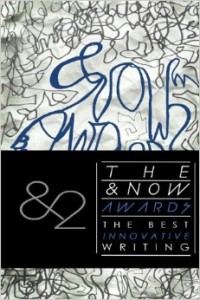 The &Now Awards Volume 2: The Best Innovative Writing
The &Now Awards Volume 2: The Best Innovative Writing
Edited by Davis Schneiderman
&NOW Books, 2012
400 pages / $19.95 Buy from Amazon or Northwestern University Press
The second volume of The &NOW Awards: The Best Innovative Writing is a twin set: one book, two parts, bound together in opposing orientations. There is one side, and then there is an other side. As editor Davis Schneiderman informs us in both introductions, “these ‘sides’ mirror each other, except when they do not.” Craig Dworkin’s “The Cube” on one side mirrors, on the other, a cube-shaped stamp story by Alissa Nutting. Kate Durbin’s appropriative “Anna Nicole Show” corresponds with Joe Atkins’ appropriative “Boxxy Foar 4DD1@!!!!1!!” Visual poetry shows up in the same slot on both sides, Nico Vassilakis’s STARINGS matching up with A.J. Patrick Lisziewicz’s Alphabet Man.
Then there are pieces that don’t (seem to) match at all, but whose correspondence contrives a relationship anyway. The split design comes across as both arbitrary and quite savvy, a description that could easily be applied to the anthology itself—probably to anthologies generally. How does one archive “innovative,” or any category of, writing? Through a book that might as well be two books. Through inverse relationships. Through matches and clashes. There are two sides to innovative writing, the anthology suggests: more than two, obvs, but alas, we must surrender to the limitations of the book.
The &NOW Awards doesn’t purport to claim anything about the “best” innovative writing except that the field is diverse: this is its best feature. It inhabits the “best of” anthology coyly and subversively, and it casts the net far and wide—vastly more so than, say, Houghton Mifflin’s staid Best American Series. The &NOW series is uninterested in genre boundaries, and offers a richly diverse, if necessarily selective, archive of (mostly) US-based contemporary literary writing. Whereas the first &NOW Awards, published in 2009, collected mainly writers who are or have been associated with &NOW as an organization and biennial festival, Volume 2 spreads out more both aesthetically and demographically. This edition includes more writers unassociated with the festival, more poetry, and more variety overall, including several pieces designed to be read on a screen, and, especially welcome, a number of works recently translated into English: for instance, excerpts from three novels written by radical French writer Antoine Volodine (a pseudonym) and two of his heteronyms, translated from the French by Brian Evenson and Antoine Cazé; and an excerpt from Song for his Disappeared Love by Chilean poet Raúl Zurita, originally published in 1985 and translated from the Spanish by Daniel Borzutzky.
The anthology’s dominant mode is arguably appropriation-based writing. Gretchen Henderson opens one side with a metappropriative work: an essay in fragments, On Marvellous Things Heard draws from a selective inventory of literary appropriations of music. On the other side, David Shields opens with an excerpt from Reality Hunger. According to the prefatory statement, &NOW was permitted by Knopf to republish only those parts of the book written by Shields; given that the whole text is a collage of other texts, they republished the Shield’s introduction to the appendix, and the appendix itself, which lists all of the book’s sources. “Who owns the words?” Shields asks. “We do—all of us.” Except we don’t, as Knopf’s restrictions remind us.
These opening pieces foreground concerns central to the anthology overall: issues of authorship, ownership, (un)original writing. The volume is an intertextual feast, or an anti-authority riot, with authors lifting from a broad range of texts, many of them canonical. In her excerpt from The Whiteness of the Foam, Evelyn Reilly amalgamates Moby Dick with a nano-fuel price list and diagrams of synthetic materials to structure a study of literary and environmental immortality. K. Silem Mohammad combines canonical appropriation with web-generated and constraint-based writing in his Sonnagrams, which rework Shakespeare’s sonnets after feeding them line by line into an internet anagram engine. Noncanonical sources show up as well: Kate Durbin chillingly transforms the notorious clown video used in court as evidence against Anna Nicole Smith’s boyfriend and attorney Howard K. Smith; Ken Taylor writes a cento composed of Charlie Sheen quotes (“there are parts of me/ that are dennis hopper”).
October 9th, 2013 / 11:05 am
The &NOW AWARDS 2: The Best Innovative Writing is out now.
Just out: The &NOW AWARDS 2: The Best Innovative Writing…
This second volume of The &Now Awards recognizes the most provocative, hardest-hitting, deadly serious, patently absurd, cutting-edge, avant-everything-and-nothing work from the years 2009-2011. The &NOW Awards features writing as a contemporary art form: writing as it is practiced today by authors who consciously treat their work as an art, and as a practice explicitly aware of its own literary and extra-literary history—as much about its form and materials, language, as it about its subject matter. The &NOW conference, moving from the University of Notre Dame (2004), Lake Forest College (2006), Chapman University (2008), the University at Buffalo (2009), the University of California, San Diego (2011), and Paris (Sorbonne and Diderot, 2012)—sets the stage for this aesthetic, while The &Now Awards features work from the wider world of innovative publishing and serves as an ideal survey of the contemporary scene.
The anthology features:
Harold Abramowitz (.UNFO)
Shane Allison
Dimitri Anastasopoulos
Daniel Borzutzky
Rachel Gontijo Araujo
Garrett Ashley
Joe Atkins
Jesse Ball
Lutz Bassmann
Jose Perez Beduya
Matt Bell
Kate Bernheimer
READ MORE >
Andy Devine vs. Davis Schneiderman
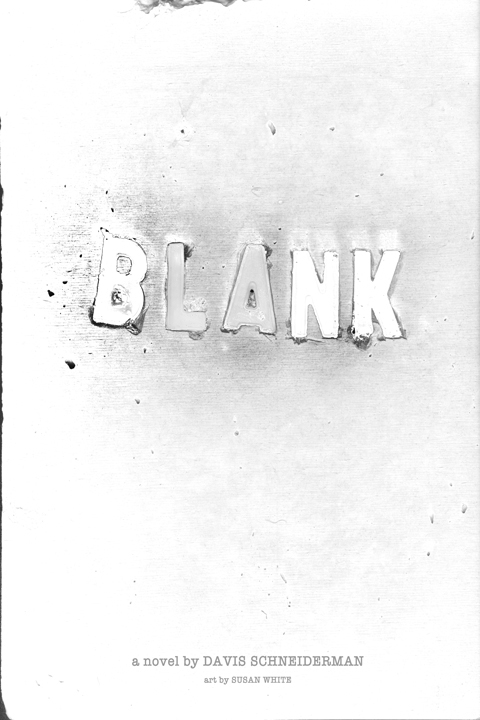
(Adam’s note: The other day I was rummaging around in Andy Devine’s gross apartment trying to stomp on a cockroach when I came across a box of cassettes. “What are these, Andy?” I asked. He was passed out on a crap-ass couch. “Mix tapes,” he grunted, “for old girlfriends.” I doubted that. I played one. It was a conversation with Davis Schneiderman. “What are you doing with this interview with Davis Schneiderman, Andy?” I asked. He rolled over on the couch. “Nothing, because I don’t like his cocky last comments.” So I took the tape home with me, transcribed it, and I present it to you now. It’s great. Andy really contextualized and problematizes Schneiderman’s new novel, Blank. Who better than the author of Words to ask questions in a way that points to how much content exists within a book that has no words. Roxane wrote about the book here, should you want more.)
Davis Schneiderman is a multimedia artist and writer and the author or editor of eight print and audio works, including the novels Drain (TriQuarterly/Northwestern) and Blank: a novel (Jaded Ibis), with audio from Dj Spooky; the co-edited collections Retaking the Universe: Williams S. Burroughs in the Age of Globalization (Pluto) and The Exquisite Corpse: Chance and Collaboration in Surrealism’s Parlor Game (Nebraska). His creative work has appeared in numerous publications including Fiction International, The Chicago Tribune, The Iowa Review, TriQuarterly, and Exquisite Corpse, and he is a contributor to The Nervous Breakdown and Big Other. 2010-11 appearances include the University of Notre Dame, the Ukrainian Embassy in D.C, the Chicago Cultural Center, the University of London Institute in Paris, and The New School, among others. He is Chair of the English Department at Lake Forest College, and also Director of Lake Forest College Press/&NOW Books. He edits The &NOW AWARDS: The Best Innovative Writing.
Andy Devine: How did you decide between BLANK and, say, BLANKS or something entirely different for the title?
Davis Schneiderman: I’ve always been fascinated by the titles of musical works, particularly mid-twentieth century jazz compositions. I think how different a work such as Charles Mingus’ “Orange Was the Color of Her Dress, Then Blue Silk” would be if it were called “Untitled” or “Round Midnight” or “Rocket Number 9 Take Off for the Planet Venus” (Sun Ra). The title of minimalist art works can also function in the same way—coding the text or painting or sculpture in a way that is different than how the title of a non-conceptual work might function. Would The Da Vinci Codes have been the same book? What about Chicken Soup for the Souls? For the most part, probably, except that the latter might have approached self-help from a pantheist perspective. READ MORE >
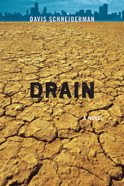 If I was in Chicago TOMORROW NIGHT (thanks Tim), I’d probably stop by Reckless Records, then go to Ed Debevic’s for mean food, then to the book launch sink for Davis Schneiderman’s new novel, Drain. Readings by some Giant faves: “Steve Tomasula, Cookies & MILF (aka Kelly Haramis & Jennifer Boxrud), Don Share, John Beer, Rebekah Silverman and Tadd Adcox (reading a piece by Fred Sasaki). Artwork by Elizabeth Birnbaum, Karen Larson, Eli Robb and Mai Wagner.” 7pm at Part Time Gallery (5219 N. Clark. 3rd Floor).
If I was in Chicago TOMORROW NIGHT (thanks Tim), I’d probably stop by Reckless Records, then go to Ed Debevic’s for mean food, then to the book launch sink for Davis Schneiderman’s new novel, Drain. Readings by some Giant faves: “Steve Tomasula, Cookies & MILF (aka Kelly Haramis & Jennifer Boxrud), Don Share, John Beer, Rebekah Silverman and Tadd Adcox (reading a piece by Fred Sasaki). Artwork by Elizabeth Birnbaum, Karen Larson, Eli Robb and Mai Wagner.” 7pm at Part Time Gallery (5219 N. Clark. 3rd Floor).
After that I’d close down the Oasis and tomorrow morning hit Heartland Cafe.
Berger/Schneiderman Story
Note: This is a collaborative short story. The authors produced it by sending work back and forth over email, based upon the authors’ experiences with the most ridiculous intellectual posturing of the academy. This story will be incorporated into a larger text called The Book of Methods, featuring a series of collaborations between Schneiderman and other writers, all powered by “machines” particular to each writer.
a matter of degree
Exhibit A: This book hurts. Like it’s made of sand. Coarse sand. I can’t finish it, because it hurts so much. Sand running over my gums. Emotionally, physically. A durian fruit lodged in my pyloric valve. I just have to stop reading and sit by myself all slugabed in the dark with a tumbler of ice-cold, mint-infused faux-Darjeeling listening to Charles Mingus’s Ah Um, no, The Black Saint and the Sinner Lady, and whispering my oh-so-calming mantra.
The first time: Oh yes, the new Chair of Graduate Studies. Yes, him. Can’t you see that he’s a minion of the University’s privatization plan? I don’t care if he is a “Marxist” mother-fucking editor of Radical Teacher. I’ve written a poem where he appears around town: at the Laundromat advising you on how to get your whites even whiter while he fondles your unmentionables (I struck the line where he licks your undies); at the grocery checkout—no, not Shop N’ Save, but Aldi—bagging your generic navy beans, and there’s a good chance you’ll find cricket parts in there. It happened to the retired classics professor with the glass jaw. He found the whole thing strangely thrilling, and I kissed him at the Halloween party. Yes, him.
II. I went on this, like, really life changing journey to the Taos Pueblo and I could really feel the power of the land there. Everything was so colorful—like living inside of Frida Kahlo’s head if she was possessed by a really wise animal spirit. A Pooka. Like Harvey the invisible rabbit. I took this jar of dirt because it has magic healing properties. Every time I start to feel sick I just sprinkle some of this dirt in my water bottle and hold a swig in my cheeks until it mixes completely with my spit and then I drop a little into my palms and rub across my cheeks while swallowing the rest with my eyes closed.
Alpha: It’s like the end of Finnegan’s Wake, where the two women narrating the universe weep in their Guinness like children—turn to stone—and then feel like the calcium-rich lampreys running thick through the Liffey jump into the effluvia of language permeating their own experience. That’s what this book you’re reading now reminds me of in a weird way.
Item C: What do I find funny? Sometimes when I listen to Ravel, certain movements take on personalities. They just have this jaunty sort of persona that reminds me, for some reason, of certain Dostoevsky characters. Especially Rodion Romanovich Raskolnikov, or the father in The Brothers Karamazov, you know, the one whose serfs choke him with vodka passes through a funnel. I always imagined him as looking something like Julia Kristeva with Rosacea. When I hear those characters channeled through that music, I smile to myself a sort of knowing grin. I’m very content.
For consideration: I like to add Toni Morrison, maybe Song of Solomon, to the syllabus to spice things up a bit. It’s not as good as Deliverance with that piggy-squealing ream action, but hell, I’ve been teaching that one so long I can almost see Ned Beatty getting all glassy eyed. What’s that you’re humming? “One toke over the line”? Yeah, I like that (singing): “One toooke ooover the liiine…” Ok, my eager grad assistants, let’s get back to the lecture class. I think those kids have had enough time to talk among themselves.
4. At first I wanted someone to ask him to speak louder. But then, the musicality of his voice, I felt myself being lulled in. He spoke so softly I loved having to really focus, like I’m in a small cellar trapped by someone whose footsteps move so across the floorboards that they may not be there are all.
&: We’ve got to take a stand now, my brothers, my pistol-whipping mutineers, against the administration’s limits on our constitutional rights involving photocopying. Bullshit capitalist marionettes trying to squelch the free speech of our mimeograph machine. They are brainwashing the undergraduates by the omission of knowledge and withholding the symmetry of the dialectical materialist critique. We’ll strike, we’ll refuse to teach, we’ll write a strongly worded letter that begins, “Dear Sir or Madam,” but then, get this, goes completely hard-core anarcho-syndicalist on their asses. Fight the father-fucking powers that be….boooyeee!
Article E: I put his handouts on my fridge at home. I look at them every day, each time I go for the milk or to grab leftover coq au vin. He’s been to prison before. I really respect that.
6) I think I need a personal drummer, some sort of iPercussion section to really tie me into the spirit world. Cause I think I am—you know—tied in to a spirit world, but not this one yet. I’m riding with valkyries, doing the star-scattered two-step in the vaikunta with Ndjambi when I need to just be rolling a phat blunt with Manabozho. Right? A repetitive beat could really focus my energies towards the eightfold path the golden mean the middle way a sort of laid-back nirvana where everything is brilliant whiteness.
*: No, it’s not ‘hate’ on the other knuckle, it’s ‘true’. My knuckles ground me and remind me what’s important in life. They’re like gravity stabilizers for when I feel myself getting caught up in other pursuits. All I have to do is look down and see ‘true love’. That’s what it’s all about. What’s that? Yes, sometimes I do wear gloves.
**: When I read Blanchot, it really makes we wonder, why write at all? I mean, why fucking write? Why construct a sentence if it’s only going to get fucking deconstructed? Do you fucking understand what I am fucking saying? There’s like no fucking point. And reading? Well, I guess that’s a fucking steaming fucking load of shit too.

